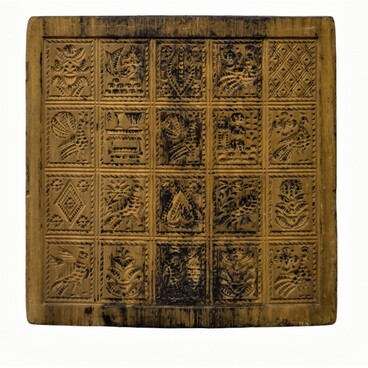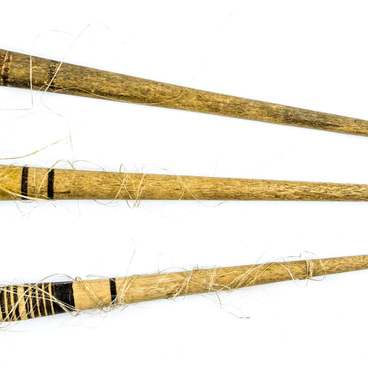From time immemorial meal and drinking were preceded by an ablution. Face and hand washing in the morning, washing hands before meal have an ancient origin. This tradition numbers at least nine centuries. Obligation to wash hands before meal was one part of the triad: hand washing — prayer — meal.
Roukomoynik (wash-hand-stand)
Roukomoy is a hanging vessel in the form of the kettle with one, two, three and even with four spouts. More ancient names of the wash-hand-stand: “roukomyya”, “grlitsa”, “umyvalnitsa”, “vodoley”.
Roukomoy was made of different material: red clay, yellow earth (in the black earth zone of Russia), white glaze with blue pattern (Gzhel', Moskovskaya province), cast iron (in the Urals). In the northern villages copper and wood hollowed roukomoi were in use.
There was a tub under the roukomoem, the water drippled into it. Generally, a tub was not very big and not wide. So, one person could carry it out and pour it out. There was a svetets with the splinter wood over the roukomoy. Small pieces of coal of the splinter wood dropped into the tub. Svetets is a prop for the splinter wood to illuminate the dwelling.
Nowadays roukomoi with two spouts are almost impossible to see. We are accustomed to see an item of the cylindrical shape which has a through hole in the bottom with a plunger in it to regulate water. The items are called roukomoynik or wash-hand-stands.
In 2020 the museum had the roukomoy restored. The surface of the roukomoy was badly stained, it was covered with a thick layer of corrosion products from orangey to umber color. There were aggressive centers of attack: on the inside face of the vessel, on the bottom of the vessel, on the inside face of the right and left spouts, on the outside of the vessel, on the eyes of the vessel.
After restoration the monument was cleaned from dirt and corrosion products, the aggressive centers of attack were stabilized, the deformation on the steel handle was eliminated. The monument was conserved and acquired exposition appearance.

